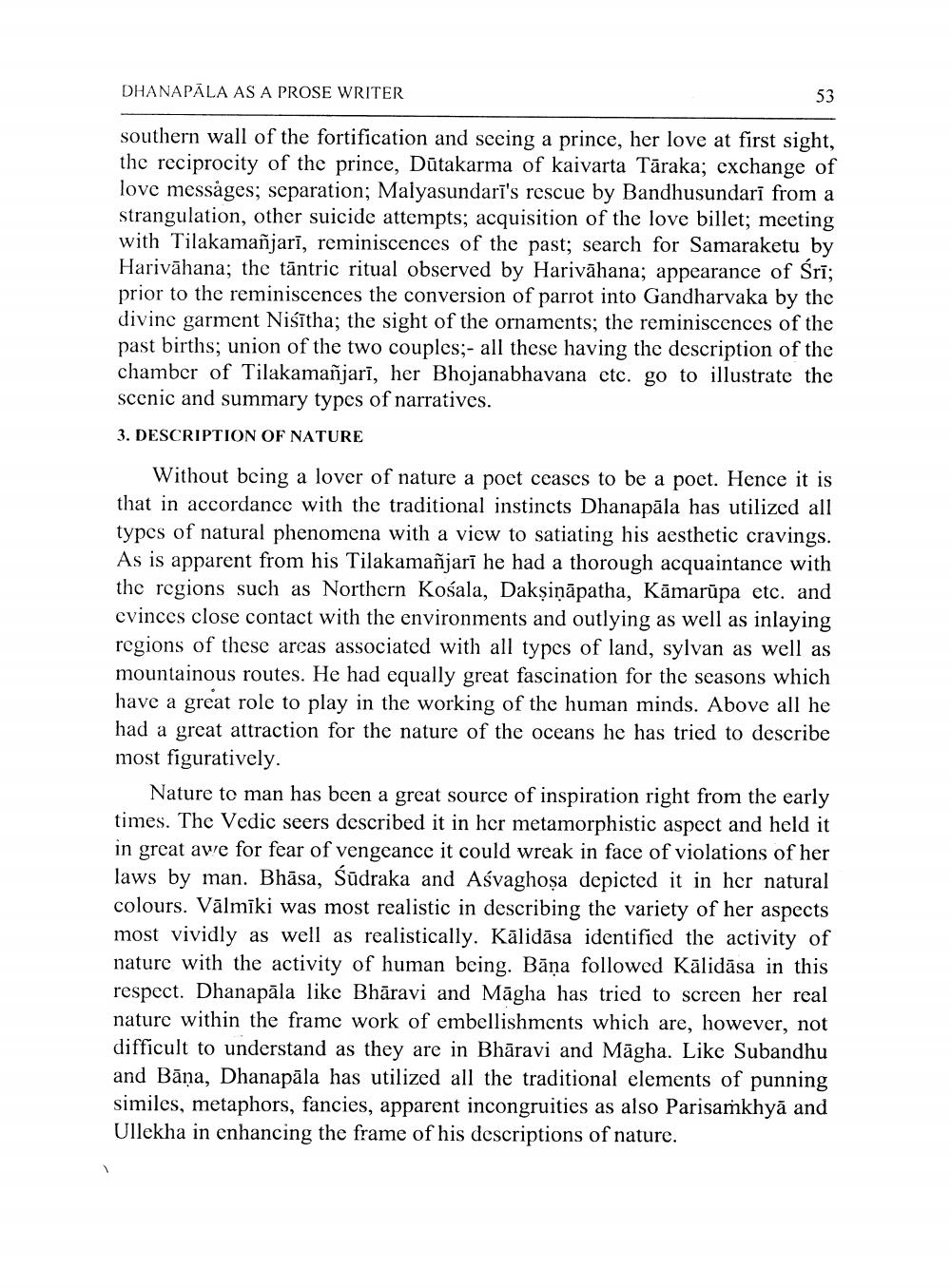________________
DHANAPĀLA AS A PROSE WRITER
southern wall of the fortification and seeing a prince, her love at first sight, the reciprocity of the prince, Dūtakarma of kaivarta Tāraka; exchange of love messages; separation; Malyasundarī's rescue by Bandhusundarī from a strangulation, other suicide attempts; acquisition of the love billet; meeting with Tilakamañjarī, reminiscences of the past; search for Samaraketu by Harivāhana; the tāntric ritual observed by Harivāhana; appearance of Śrī; prior to the reminiscences the conversion of parrot into Gandharvaka by the divinc garment Nisītha; the sight of the ornaments; the reminiscences of the past births; union of the two couples;- all these having the description of the chamber of Tilakamañjarī, her Bhojanabhavana etc. go to illustrate the scenic and summary types of narratives. 3. DESCRIPTION OF NATURE
Without being a lover of nature a poet ceases to be a poet. Hence it is that in accordance with the traditional instincts Dhanapāla has utilized all types of natural phenomena with a view to satiating his aesthetic cravings. As is apparent from his Tilakamañjarī he had a thorough acquaintance with the regions such as Northern Kosala, Dakṣiṇāpatha, Kāmarūpa etc. and evinces close contact with the environments and outlying as well as inlaying regions of these areas associated with all types of land, sylvan as well as mountainous routes. He had equally great fascination for the seasons which have a great role to play in the working of the human minds. Above all he had a great attraction for the nature of the oceans he has tried to describe most figuratively.
Nature to man has been a great source of inspiration right from the early times. The Vedic seers described it in her metamorphistic aspect and held it in great ave for fear of vengeance it could wreak in face of violations of her laws by man. Bhāsa, Sūdraka and Asvaghoșa depicted it in her natural colours. Vālmīki was most realistic in describing the variety of her aspects most vividly as well as realistically. Kālidāsa identified the activity of nature with the activity of human being. Bāņa followed Kālidāsa in this respect. Dhanapāla like Bhāravi and Māgha has tried to screen her real nature within the frame work of embellishments which are, however, not difficult to understand as they are in Bhāravi and Māgha. Like Subandhu and Bāna, Dhanapāla has utilized all the traditional elements of punning similes, metaphors, fancies, apparent incongruities as also Parisamkhyā and Ullekha in enhancing the frame of his descriptions of nature.




